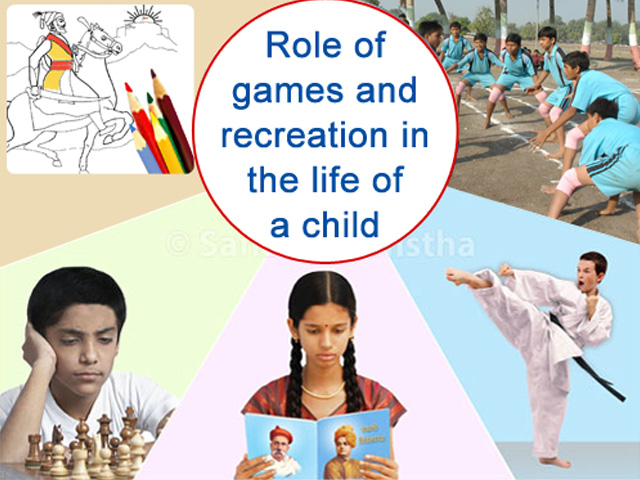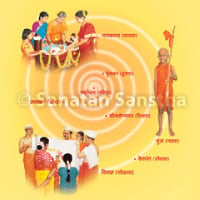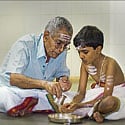Games and toys are basic needs of children. Apart from getting immense pleasure while playing with toys, the child learns to use his sense and motor organs. Child can develop appropriate skills by observing, experimenting and concentrating on educational toys. Also by sharing with other children, the child learns to mix and co-operate with other children. Let us understand more about Toys for Children from this article.
1. How to select toys for children of different ages ?
Examples of toys which can be selected for children of various ages are given below :
In early infancy, bright coloured objects which dangle when tied about two feet above the cradle and squeaking toys catch the attention of the baby. At about 5-6 months of age, the child develops co-ordination and enjoys handling a rattle or a toy which makes noise and transferring it from one hand to another. Plastic or wooden blocks arouse interest in a child who can sit independently and can make a tower of two blocks. At one year, the child enjoys keeping toys or blocks in and out of the box. The child likes to play with materials like water, earth, dough and clay. Plastic books or drawing books, with only one big object drawn on one page attracts the attention of a 6 month old baby. Toys like motor-cars or trucks are suitable toys for children who can walk and play outside the house. Wooden toys like a horse, an engine, a big doll and elephant, papers, coloured pencils and chalks are interesting play-objects to a child from 1.5 to 2 years on wards. Drums, trumpets and whistles are liked by the children at the age of 3 years when they are able to blow them. They enjoy drawing lines on paper or a blackboard. Playing with threads and domestic mimicry in the form of a cooking set creates interest at the age of 3 years (to girls). A small plastic watering-can and water keeps the child busy in the garden. Outdoor-games and toys for children like a bat and a ball, a tricycle etc. keeps the child playing in fresh air.
Water-colours, tracing books, magnets and construction blocks are suitable toys for school-going children. Though outdoor activities increase by this age, indoor games are also helpful particularly in rainy season. Puzzles, ludo and games like snake and ladder can be played during this season. After that, as the child grows older, more mechanical work is liked by him.
Some objects like mechano-sets, carpentry-sets, tools, etc. are good toys for children. Later the children have to stretch their imagination to make wonderful objects like a small house or a school with a garden etc. This stimulates their intelligence. Secondary school children enjoy making some simple gadgets using Dynamo kits which contain magnets, electro-magnets, switches, small motors| etc. They also like to play chess, carom etc.
However, it doesn’t mean that all parents should buy costly toys for children. Tribal children enjoy playing with stones, leaves, flowers and animals like a chick or a pup while some of their counterparts in the city play with costly toys like cars and dolls which walk, talk or run on batteries. Many household objects like tins, pieces of old furniture can be used by children as toys. It is not necessary to spend money on expensive toys.
Toys for children should be light and attractive. They should promote the skill and intelligence of the child. Children develop attachment with toys and feel very much depressed if their toy or doll is damaged or broken because of the attachment they develop with their toys. Hence their toys should be durable.
2. What is the role of games and recreation in the life of a child ?
Playing games plays an important role in the development of a child. Playing helps the child to grow and develop in all spheres of life physically, mentally, socially and psychologically. The child enjoys playing and while enjoying it, learns to adjust and share with his play-mates. Festivals break the monotony of children’s routine life and add to their recreation and joy.
Along with recreation, play promotes development of muscles as well as various skills. Scribbling or drawing with pencils improves his control over hand and fingers. Outdoor-games like cycling, swimming help him build his physique.
Play is also a form of education. The Montessori method of nursery teaches the child mostly through playing with toys. Play is a form of psychological therapy as well. A child who cannot confide and talk about his problems suffers from pent up emotions. Anger and guilt feelings, while playing, are expressed through banging, throwing and breaking toys. He vents out his anger and frustration through play which acts as a good outlet for his feelings.
3. What are the effects of television on children ?
It is through T.V. that even handicapped children can keep contact with the outside world. Well-organised T.V. programmes provide a better medium for entertainment and audio-visual education. However, the viewer cannot get his doubts cleared from the person on T.V. In such cases, parents should try to solve their queries.
On the other hand, children tend to neglect sleep, studies, play and food when engrossed in watching the television. It is estimated that American children watch T.V. on an average for 4 to 6 hours per day. The television snatches away time for important activities like reading, extracurricular activities and developing interpersonal relations with peers or other family members. If watched from a close distance for a long time, T.V. affects eye-sight and causes headache. Few children develop photogenic epilepsy i.e. fits while watching T.V. It is observed that children tend to see programmes like movies as they are easily available on T.V. This often results in their picking up and imitating the bad, destructive or intolerable habits of the film characters. This may be carried too far and result in the susceptible child, becoming a potential juvenile delinquent. This adverse brain-washing effect on child’s mind should be avoided. Scenes of violence promote aggressive behaviour. Some adolescents may pick up the ideas of committing thefts, rape or even murder by watching movies on T.V. Hence parents should select good and educative programmes for their children using their discretion and be strict about the content and the time devoted by them in watching programmes on T.V.
4. What is the role of hobbies in a child’s life ?
Hobby is an interesting pursuit, which we take up not for earning money but for amusement in leisure time. There are many kinds of hobbies. Collecting leaves, flowers, pictures, postage stamps, coins and autographs are some of the interesting hobbies. Gardening, painting, photography, carpentry, music, dance, indoor and outdoor games, reading books and bird watching are good hobbies for older children. Hobbies keep the child busy in constructive activity instead of wasting his time in chatting or seeing movies.
Apart from interesting designs, each stamp has a story to tell. It also teaches the child the history of different countries to which they belong.
A rose from his own garden, which he is watering daily, gives the child greater pleasure than a rose he may buy. A painting by their son or daughter gives parents greater pleasure than a painting which they may buy. The parents should study the natural aptitude of their children and encourage and guide them to develop a particular hobby. If possible, it is better to encourage a hobby, which can become a source of income, if the need arises later.
Everyone, young and old should have a hobby, for it adds to the pleasure of life. Hobby is often an education in itself and provides a welcome relief from the dull routine of the day. It also gives us something to fall back on in our retired life.
Reference : Sanatan Sanstha’s Holy text ‘Your child (1 to 12 years)’.


 Sanskar Meaning and Definition
Sanskar Meaning and Definition Despite many births as a Human Being, why do Sanskar have to be made again ?
Despite many births as a Human Being, why do Sanskar have to be made again ? 16 Sanskar – Importance and Objectives
16 Sanskar – Importance and Objectives What is the aim of performing Sanskaras ?
What is the aim of performing Sanskaras ? Garbh Sanskar (Pre-birth Sanskar)
Garbh Sanskar (Pre-birth Sanskar) Discipline children before the child’s birth
Discipline children before the child’s birth